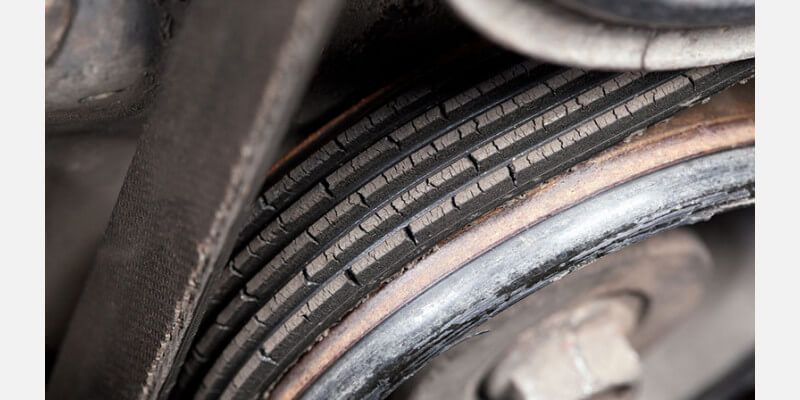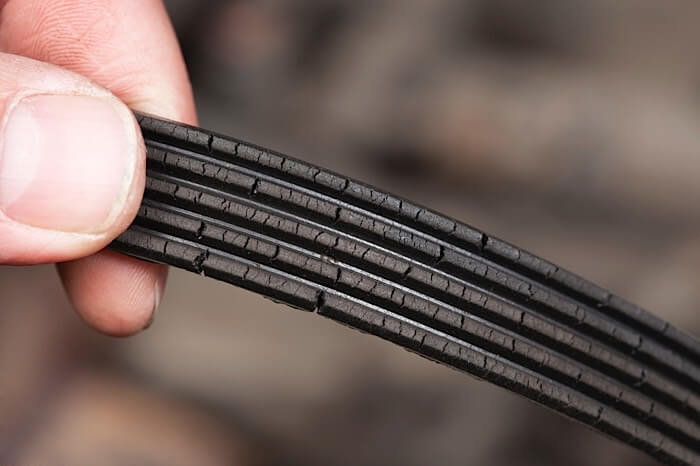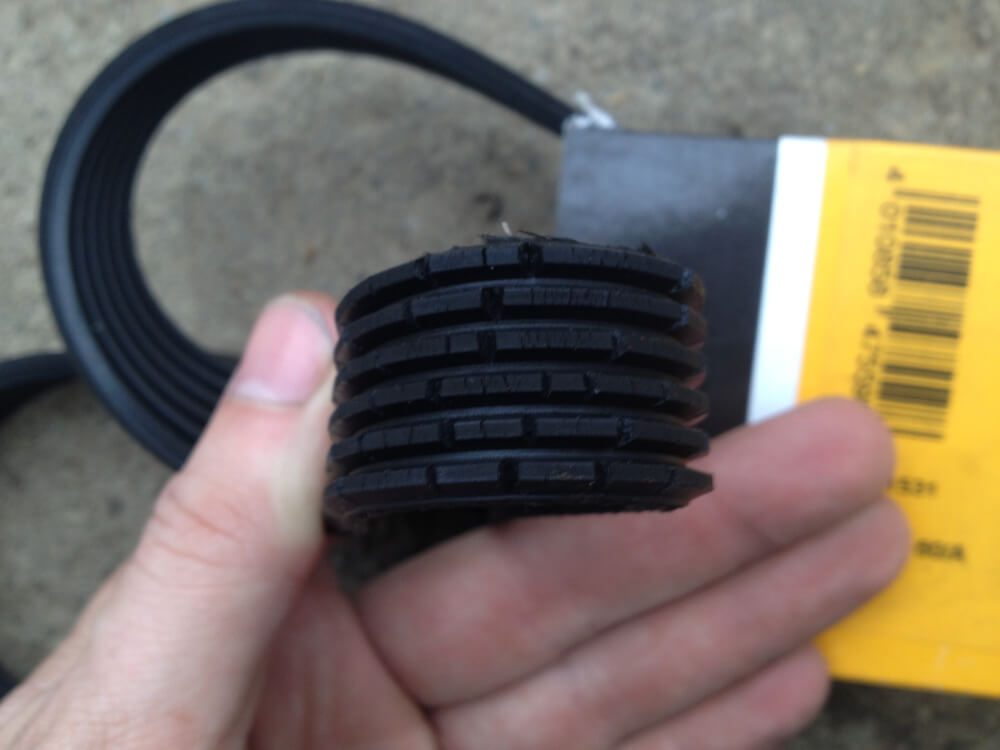A serpentine belt is a single, continuous belt that powers various devices in your engine, such as the alternator, the power steering pump, the water pump and the air conditioning compressor.
What happens if your serpentine belt breaks? The above systems will shut down, and your vehicle will most likely overheat, and from there, it’s a slippery slope to more issues.
How often should you change the serpentine belt?
Usually, the serpentine belt should be changed every 40-60,000 miles or every 4-5 years.
But you should visually inspect your belt once every 2-6 months, depending on how much you drive. If you know it’s been over two years since the serpentine belt has been replaced and you drive a lot. I’d look at it every 2-3 months just in case. It only takes a minute!
You are looking for any fraying, splitting, glazing (the working edge of the serpentine belt becomes shiny), or any other damage.
To locate your serpentine belt, a quick google, or search in a service manual will help you find it. It’s usually pretty easy to check.
Here are a couple of examples of worn-out serpentine belts:



If yours resembles the above, do make plans to change your car’s serpentine belt. You don’t want to reach to the point of breakage. Apart from the possibility of ruining your engine (if it overheats and you drive it like that), you’re just going to have a bad time.
Bad serpentine belt symptoms
Here are some signs that your car might require a serpentine belt change:
- Loud squeak/screech from under the hood when you accelerate. The most common one.
- Your car’s serpentine belt shows signs of splitting, cracking, fraying, or glazing.
- Power steering no longer works – sudden heavy steering. But this is not always the case, as some cars have an electric power steering pump, and a snapped serpentine belt will not affect their steering.
- Engine overheats – this might be caused by something else too, so visually inspect that belt!
- Check engine light or other warning lights displayed (usually accompanying one or several of the above sypmtoms)
- Kind of tied to the above, your engine might just die, and the battery light might light up. As the serpentine belt snaps off, the alternator will not charge the car’s components with electricity and… well it will just stop running after a while.
Again, regular inspection of your belt would prevent any unpleasantries like power steering loss and overheating. Look for the location of the serpentine belt and make a habit of checking it at least twice a year. It doesn’t cost you a dime to look.
Conclusion
It’s quite easy to check your serpentine belt from time to time, as part of preventive maintenance or your regular maintenance schedule, once you figure out its exact location for your engine. A quick Google or a service manual for your car’s model will help you identify things faster.


Comments are closed.